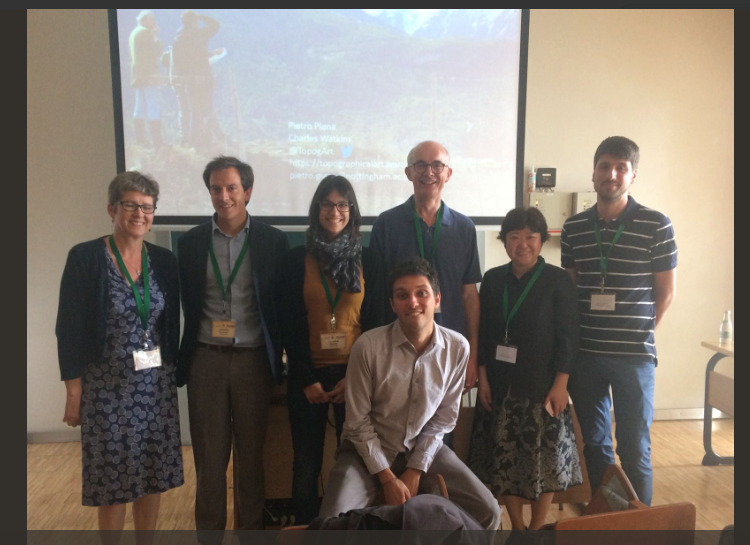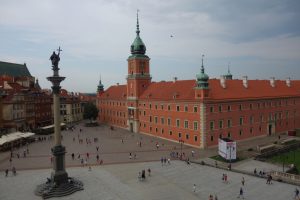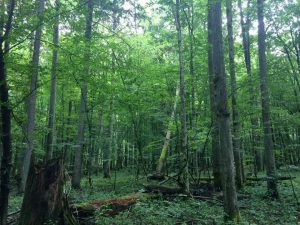
August 7, 2018, by lzzeb
The 17th International Conference of Historical Geographers in Warsaw, July 2018
A blog by Pietro Piana
The 17th International Conference of Historical Geographers took place in Warsaw between 15 and 20 July 2018. The conference, which is organised every three years, is the most important event for historical geographers, and this year there were 106 thematic sessions, 4 key speakers and 365 papers and by participants from 39 countries. Thanks to the financial support from the School of Geography’s Research Committee I attended the conference, organized two sessions and delivered a paper. The venue was at the University of Warsaw, in the Old University Library, right in the historical centre of the city, not far from the castle and the market square.
With Charles Watkins, I organised two sessions and gave a paper on Topography, Landscape and Historical Geography, which gathered contributions from English, Japanese, Croatian and Italian scholars. The paper I gave with Charles presented some results from our Leverhulme research project on Topographical Art and Landscape. We focussed on English topographical artists and landscape history in the Valle d’Aosta, north west Italy, in the nineteenth-century. The Nottingham contingent in the session included Stephen Daniels, Susanne Seymour and Ivan Tekić. Steve discussed the importance of biography in historical geography research, focussing on two English topographical artists, John Britton and Richard Colt Hoare. Susanne examined the ‘Topographical imaginations’ of English artists who depicted landscapes of slavery in the Caribbean. Ivan showed some of the results of his PhD project, discussing the importance of the Franciscan cadastre for the landscape history of Zlarin Island, Dalmatia. Leonardo Porcelloni from the University of Florence dealt with the landscape changes of southern Tuscany’s coastal wetlands through the analysis of the Leopoldine cadastre. Valentina Pescini and Nicola Gabellieri, respectively from Genoa and Trento University, discussed the importance of multidisciplinary research in historical geography, showing the results of a study on the traditional use of fire in Western Liguria. Setsu Tachibana from Kobe Yamate University, Japan, analysed a particular painting of Ohibiro, Hokkaido, by the English writer A. Henry Savage Landor (1890).
The conference was excellently organised in terms of location and timetable, allowing fruitful discussions both during the sessions and in lunch and coffee breaks, when we could enjoy fantastic Polish food. Warsaw itself revealed to be a very interesting city, full of museums and attractions, with a contrasting urban skyline which reflects the city’s interesting and often tormented history. Warsaw was almost entirely destroyed during the Second World War. A massive post-war rebuilding programme recreated the Old Town and New Town districts, as well as numerous churches and palaces. Around the centre, blocks of flats of the Socialist period still survive, as well as the iconic and controversial Palace of Culture and Science, built between 1952 and 1955, as a ‘gift’ to the Poles from the Soviet Union. Today the building is surrounded by modern skyscrapers which have dramatically changed the city’s skyline in the last few years. East of Warsaw, I could visit the forest of Bialowieza near the Belarus border. A local guide took us to the strict forest reserve, today unmanaged, home to a large number of animals including the rare European bison, the lynx, the wolf and the moose. The forest is a composed by mixed species, often very old, including ash, oaks, lime trees and spruces.
Above all, the conference has been a very useful and stimulating occasion to discuss my work with other scholars and to develop ideas for potential future research. My thanks go to the School of Geography for supporting my attendance.



great post and very informative